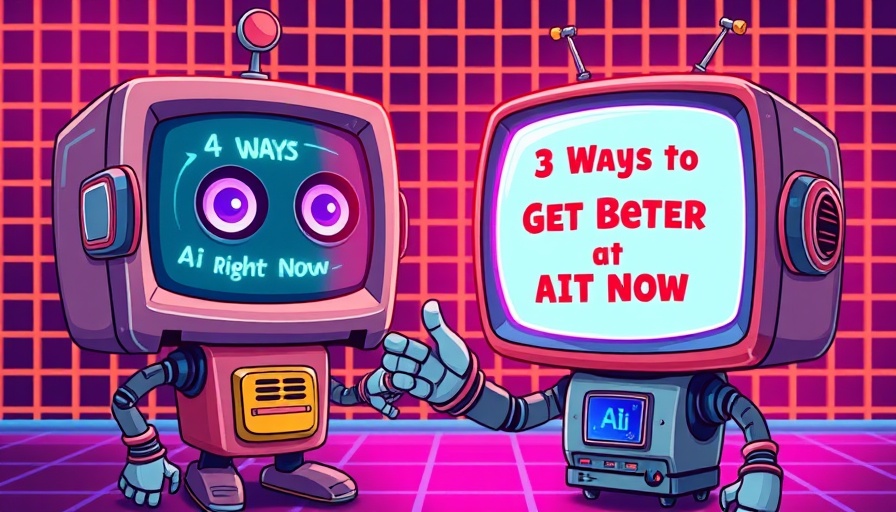
Unlocking AI Skills: A Practical Approach for Business Owners
As the landscape of artificial intelligence continues to evolve, staying ahead requires not just knowledge but practical experience. In the recent video 3 Ways To Get Better At AI Right Now, the host emphasizes that mastering AI tools is essential for individuals and businesses alike. Let’s delve deeper into three actionable strategies you can employ right away to leverage AI effectively and enhance your business operations.
In 3 Ways To Get Better At AI Right Now, the discussion dives into actionable strategies for improving AI skills, exploring key insights that sparked deeper analysis on our end.
Using OpenAI's 03 Model as Your Strategic Partner
One of the most compelling strategies is to spend a week treating OpenAI's 03 model as a strategic colleague, not merely a tool. This means engaging with the model in a collaborative manner, asking it to help you brainstorm, draft memos, or even outline new business strategies. For instance, if you're considering launching a new service, provide the AI with your ideas and ask for a structured plan. This method allows you to gain insights and perspectives you may not have considered, effectively enhancing your decision-making process.
The Rise of Vibe Coding: Bringing Ideas to Life
The second strategy focuses on vibe coding, which involves using platforms like Lovable or Bolt to create prototypes from your ideas. This hands-on approach not only makes the coding experience approachable but also empowers you to visualize and iterate on concepts quickly. Imagine transforming an idea for a new product feature into a working prototype that your team can actually test and provide feedback on. This iterative process encourages innovation and could be the key to generating the next big idea in your industry.
Building Agentic Workflows for Efficiency
Lastly, constructing automated workflows using tools like Zapier or N8N can immensely optimize your business operations. By manually mapping out these flows, you gain a clearer understanding of how integrating AI into everyday tasks can enhance productivity. Whether it's automating outreach emails or streamlining research processes, creating these workflows enables you to harness the power of AI without getting overwhelmed by its complexity.
The Future of AI Skills in Business
In light of the rapid advancements in AI technology, it's no longer sufficient to simply understand how these tools work; practical experience is critical. Engaging directly with platforms, experimenting with vibe coding, and constructing workflows is not just beneficial—it’s essential for anyone looking to thrive in today's business landscape. This proactive learning approach also positions you advantageously against competitors who may still be relying on outdated methods. By committing to these practices, you can expect to improve your AI skills significantly, keeping you competitive in an increasingly tech-driven market.
Take Action: Start Using AI Now!
As we move forward, the imperative is clear: start implementing these strategies now. Whether you're a seasoned business owner or just dipping your toes into AI, these approaches can propel you towards success. Embrace the future by enhancing your skills with AI – the opportunities are vast and exciting!
 Add Row
Add Row  Add
Add 




Write A Comment